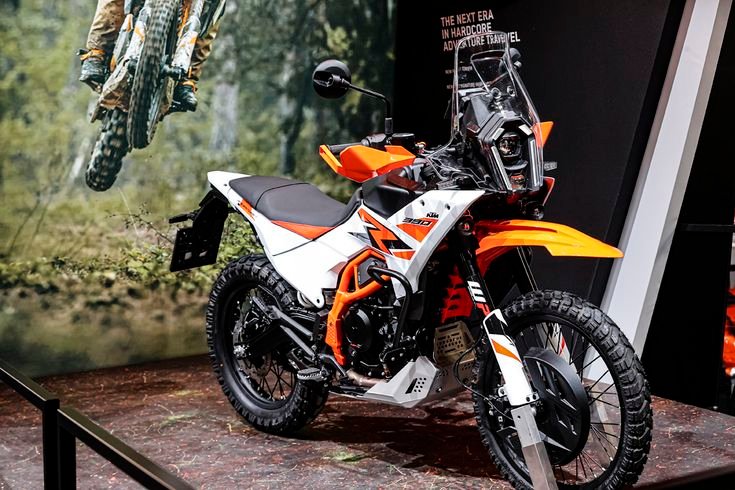
Electric bikes (e-bikes) have surged in popularity across the globe, offering a convenient and eco-friendly mode of transportation. As more people turn to e-bikes for commuting, fitness, and leisure, questions around the legal requirements for riding them have become increasingly common. One of the most frequently asked questions is: Do you need a license to ride an e-bike? The answer depends on various factors, including the type of e-bike, local laws, and specific regulations in your country or state. This article explores the different regulations governing e-bikes around the world, factors that influence whether a license is required, and other legal considerations for e-bike riders.
What Are E-Bikes?
Before diving into the licensing requirements, it’s important to understand what constitutes an e-bike. Generally, an e-bike is a bicycle equipped with an electric motor that assists the rider’s pedaling efforts. E-bikes come in various forms, but they are typically classified into three categories based on their power and speed:
- Class 1 E-Bikes: These are pedal-assist bikes, meaning the motor provides assistance only when the rider is pedaling. The motor stops assisting once the bike reaches 20 mph (32 km/h). Class 1 e-bikes are the most common and are often allowed on bike paths and in most public spaces where regular bicycles are permitted.
- Class 2 E-Bikes: These e-bikes are equipped with a throttle that can propel the bike without any pedaling. Like Class 1 e-bikes, the maximum assisted speed is capped at 20 mph (32 km/h). Class 2 e-bikes are also widely accepted but may face restrictions on certain bike paths and trails.
- Class 3 E-Bikes: These are also pedal-assist bikes, but their motor assists up to a higher speed of 28 mph (45 km/h). Due to their higher speed, Class 3 e-bikes are subject to more stringent regulations and may not be allowed on certain bike paths or trails. Riders may be required to wear helmets and meet other safety requirements.
These classifications play a critical role in determining whether you need a license to ride an e-bike, as different jurisdictions have different rules based on these classes.
READ MORE: Toyota Tundra: Features, Performance, and More
Licensing Requirements for E-Bikes Around the World
United States
In the United States, e-bike regulations vary from state to state. The federal government classifies e-bikes as bicycles, provided they have a maximum power output of 750 watts (1 horsepower) and do not exceed 20 mph when using motor power alone. Under this classification, e-bikes do not require a license, registration, or insurance at the federal level. However, individual states have the authority to impose their own rules.
- California: California follows the three-tier classification system. Riders of Class 1 and Class 2 e-bikes do not need a license, while riders of Class 3 e-bikes must be at least 16 years old and are required to wear helmets. No license is required for any class, but Class 3 e-bikes cannot be used on multi-use paths unless explicitly allowed by local laws.
- New York: New York recently legalized e-bikes with the same three-class system. No license is required for Class 1 or Class 2 e-bikes, but Class 3 e-bike riders must wear helmets and can only ride on streets with a speed limit of 30 mph or less.
- Florida: Florida treats e-bikes like regular bicycles, requiring no license, registration, or insurance. Riders must be at least 16 years old, and there is no helmet requirement for those over 16.
- Texas: Texas follows a similar approach to Florida, with no licensing requirement for e-bikes that meet the federal definition. However, municipalities may have their own restrictions, particularly for Class 3 e-bikes.
Overall, most U.S. states do not require a license to ride an e-bike, especially for Class 1 and Class 2 models. However, regulations may vary, so it is crucial to check local laws.
READ MORE: 2024 Mercedes-Benz E-Class Breaks Cover
Canada
In Canada, e-bike regulations are governed by both federal and provincial laws:
- Federal Law: Under federal law, e-bikes are classified as power-assisted bicycles if they have a maximum power output of 500 watts and do not exceed a speed of 32 km/h (20 mph). No license is required to ride these e-bikes, provided they meet these criteria.
- Provincial Laws: Provinces may impose additional regulations. For instance, in Ontario, riders must be at least 16 years old and wear a helmet. No license is required, but modifications that increase the speed or power output may reclassify the vehicle, necessitating a license and registration. British Columbia and Quebec have similar regulations, allowing e-bikes to be used on bike lanes and paths where traditional bicycles are permitted, without the need for a license.
European Union
The European Union (EU) has a relatively uniform approach to e-bike regulations, governed by the European Parliament and the Council of the European Union.
- Pedal-Assist E-Bikes (Pedelecs): These are e-bikes with motors that only provide assistance when the rider pedals and have a maximum speed of 25 km/h (15.5 mph). Pedelecs with a maximum motor output of 250 watts are considered bicycles and do not require a license, registration, or insurance.
- Speed Pedelecs: E-bikes with a higher maximum speed of up to 45 km/h (28 mph) are classified differently. In many EU countries, including Germany, France, and the Netherlands, speed pedelecs require a license (typically an AM moped license), registration, and insurance. Riders must also wear helmets.
- Throttle-Controlled E-Bikes: E-bikes equipped with a throttle that can propel the bike without pedaling may also be subject to different regulations, including licensing requirements, depending on the country.
READ MORE: Do You Need License to Ride an E-Bike?
United Kingdom
In the UK, e-bikes are referred to as “electrically assisted pedal cycles” (EAPCs). For an e-bike to be classified as an EAPC and be ridden without a license, it must:
- Have pedals that can be used to propel the bike.
- Have a motor with a maximum power output of 250 watts.
- Not exceed a maximum speed of 25 km/h (15.5 mph).
If the e-bike meets these criteria, it does not require a license, registration, or insurance, and can be ridden by anyone over the age of 14. However, e-bikes that exceed these specifications are classified as mopeds or motorcycles, requiring a license, registration, and insurance.
Australia
E-bike regulations in Australia are determined by state and territory laws, but they generally follow two main classifications:
- Pedal-Assist E-Bikes (Pedelecs): These e-bikes must have a maximum power output of 250 watts and a speed limit of 25 km/h (15.5 mph). No license is required for these e-bikes across all states and territories.
- Throttle-Controlled E-Bikes: E-bikes with a throttle that can reach speeds of up to 25 km/h (15.5 mph) and a maximum power output of 200 watts are also allowed without a license. E-bikes exceeding these limits are classified as motor vehicles and require a license, registration, and insurance.
READ MORE: Top E-bike Seat Brands for 2024
Asia
Regulations for e-bikes in Asia vary significantly across countries:
- China: China has one of the largest markets for e-bikes, and the rules are relatively relaxed. No license is required for e-bikes that meet specific criteria, such as a maximum speed of 25 km/h (15.5 mph) and a weight limit of 55 kg. E-bikes exceeding these limits may be classified as motor vehicles, requiring a license.
- India: In India, e-bikes with a motor power of up to 250 watts and a maximum speed of 25 km/h (15.5 mph) are classified as non-motorized vehicles, requiring no license or registration. However, more powerful e-bikes do require a license, registration, and insurance.
- Japan: Japan requires e-bikes to comply with specific safety standards. E-bikes that exceed a speed of 24 km/h (15 mph) or have a motor output above a certain threshold require a license and registration.
Factors Influencing the Need for a License
Several factors determine whether you need a license to ride an e-bike. Understanding these factors can help you navigate the legal landscape more effectively:
1. Type and Classification of E-Bike
The classification of e-bikes, particularly the motor power and maximum speed, is a critical factor in determining licensing requirements. Low-powered e-bikes (such as Class 1 and Class 2 in the U.S., or pedelecs in the EU) are often treated as regular bicycles, with no licensing requirement. In contrast, high-powered e-bikes, such as speed pedelecs or throttle-controlled models, may be classified as mopeds or motorcycles, necessitating a license.
2. Local Regulations and Laws
Regulations for e-bikes vary significantly by jurisdiction. While some regions have adopted uniform standards, others impose their own rules. It is essential to check local laws before riding an e-bike to ensure compliance with all requirements, including licensing, registration, and insurance.
3. Rider Age
Many jurisdictions impose minimum age requirements for riding e-bikes. For example, Class 3 e-bike riders in California must be at least 16 years old. Similarly, the UK requires riders of e-bikes classified as EAPCs to be at least 14 years old. Understanding age restrictions is#### Do You Need a License to Ride an E-Bike?
Electric bikes, or e-bikes, have become increasingly popular worldwide as a convenient, eco-friendly alternative to traditional transportation methods. As more people turn to e-bikes for commuting, fitness, and leisure, questions around the legal requirements for riding them have become prevalent. One of the most common queries is: Do you need a license to ride an e-bike? The answer depends on various factors, including the type of e-bike, local laws, and specific regulations in your country or state. This article explores the regulations governing e-bikes worldwide, the factors influencing whether a license is required, and other legal considerations for e-bike riders.
READ MORE: Tata Punch: A Rising Star in India’s Automotive Market
What Are E-Bikes?
Before understanding licensing requirements, it’s crucial to know what an e-bike is. E-bikes are bicycles equipped with an electric motor that assists the rider’s pedaling. These bikes come in various forms, usually classified into three categories based on power and speed:
- Class 1 E-Bikes: Pedal-assist bikes where the motor provides assistance only when the rider is pedaling and stops assisting when the bike reaches 20 mph (32 km/h). Class 1 e-bikes are often allowed on bike paths and in public spaces where regular bicycles are permitted.
- Class 2 E-Bikes: These bikes have a throttle that can propel the bike without pedaling, with a maximum speed of 20 mph (32 km/h). Like Class 1 e-bikes, they are generally accepted but may face restrictions on certain bike paths.
- Class 3 E-Bikes: Pedal-assist bikes with a motor that assists up to 28 mph (45 km/h). Class 3 e-bikes are subject to more stringent regulations, and in some places, riders must wear helmets and meet other safety requirements. They may also be restricted on certain bike paths or trails.
These classifications play a significant role in determining whether a license is needed to ride an e-bike, as different jurisdictions have different rules based on these classes.
Licensing Requirements for E-Bikes Around the World
United States
In the U.S., e-bike regulations vary by state, but federal law classifies e-bikes as bicycles provided they have a maximum power output of 750 watts (1 horsepower) and do not exceed 20 mph when using motor power alone. At the federal level, e-bikes do not require a license, registration, or insurance. However, individual states have their own regulations:
- California: California uses the three-tier classification system. Riders of Class 1 and Class 2 e-bikes do not need a license, but Class 3 e-bike riders must be at least 16 years old and wear helmets. No license is required for any class, but Class 3 e-bikes cannot be used on multi-use paths unless explicitly allowed by local laws.
- New York: New York recently legalized e-bikes with the same three-class system. No license is required for Class 1 or Class 2 e-bikes, but Class 3 riders must wear helmets and are limited to streets with a speed limit of 30 mph or less.
- Florida: E-bikes are treated like regular bicycles in Florida, requiring no license, registration, or insurance. Riders must be at least 16 years old, and there is no helmet requirement for those over 16.
- Texas: Texas does not require a license for e-bikes that meet the federal definition. However, municipalities may have additional restrictions, especially for Class 3 e-bikes.
In summary, most U.S. states do not require a license to ride an e-bike, particularly for Class 1 and Class 2 models, but regulations can vary, so checking local laws is essential.
READ MORE: Ford to Restart Manufacturing Operations at Chennai Plant
Canada
In Canada, e-bike regulations are governed by both federal and provincial laws:
- Federal Law: Federal regulations classify e-bikes as power-assisted bicycles if they have a maximum power output of 500 watts and do not exceed a speed of 32 km/h (20 mph). No license is required to ride these e-bikes if they meet these criteria.
- Provincial Laws: Provinces can impose additional regulations. For instance, in Ontario, riders must be at least 16 years old and wear a helmet. No license is required, but modifying an e-bike to increase its speed or power may reclassify it, necessitating a license and registration. British Columbia and Quebec have similar regulations, allowing e-bikes on bike lanes and paths where traditional bicycles are permitted without needing a license.
European Union
The European Union (EU) has a relatively uniform approach to e-bike regulations, governed by the European Parliament and the Council of the European Union:
- Pedal-Assist E-Bikes (Pedelecs): These e-bikes have motors that assist only when pedaling, with a maximum speed of 25 km/h (15.5 mph). Pedelecs with a maximum motor output of 250 watts are classified as bicycles and do not require a license, registration, or insurance.
- Speed Pedelecs: E-bikes with a higher speed of up to 45 km/h (28 mph) are classified differently. In many EU countries, including Germany, France, and the Netherlands, speed pedelecs require a license (typically an AM moped license), registration, and insurance. Riders must also wear helmets.
- Throttle-Controlled E-Bikes: E-bikes equipped with a throttle that can propel the bike without pedaling may also be subject to different regulations, including licensing requirements, depending on the country.
United Kingdom
In the UK, e-bikes are called “electrically assisted pedal cycles” (EAPCs). To be classified as an EAPC, which can be ridden without a license, an e-bike must:
- Have pedals that can propel the bike.
- Have a motor with a maximum power output of 250 watts.
- Not exceed a maximum speed of 25 km/h (15.5 mph).
If an e-bike meets these criteria, it does not require a license, registration, or insurance and can be ridden by anyone over the age of 14. E-bikes that exceed these specifications are classified as mopeds or motorcycles, requiring a license, registration, and insurance.
Australia
E-bike regulations in Australia are determined by state and territory laws, but they generally adhere to two classifications:
- Pedal-Assist E-Bikes (Pedelecs): These e-bikes must have a maximum power output of 250 watts and a speed limit of 25 km/h (15.5 mph). No license is required for these e-bikes across all states and territories.
- Throttle-Controlled E-Bikes: E-bikes with a throttle that can reach speeds of up to 25 km/h (15.5 mph) and a maximum power output of 200 watts are also allowed without a license. E-bikes exceeding these limits are classified as motor vehicles, requiring a license, registration, and insurance.
Asia
Regulations for e-bikes in Asia vary significantly across countries:
- China: China has one of the largest markets for e-bikes, with relatively relaxed rules. No license is required for e-bikes that meet specific criteria, such as a maximum speed of 25 km/h (15.5 mph) and a weight limit of 55 kg. E-bikes exceeding these limits may be classified as motor vehicles, requiring a license.
- India: In India, e-bikes with a motor power of up to 250 watts and a maximum speed of 25 km/h (15.5 mph) are classified as non-motorized vehicles, requiring no license or registration. However, more powerful e-bikes require a license, registration, and insurance.
- Japan: Japan requires e-bikes to comply with specific safety standards. E-bikes that exceed a speed of 24 km/h (15 mph) or have a motor output above a certain threshold require a license and registration.
READ MORE: JRG and Takagi Seiko Form Joint Venture in India
Factors Influencing the Need for a License
Several factors determine whether you need a license to ride an e-bike. Understanding these factors can help you navigate the legal landscape more effectively:
1. Type and Classification of E-Bike
The type of e-bike, particularly the motor power and maximum speed, is a critical factor in determining licensing requirements. Low-powered e-bikes (such as Class 1 and Class 2 in the U.S., or pedelecs in the EU) are often treated as regular bicycles, with no licensing requirement. In contrast, high-powered e-bikes, such as speed pedelecs or throttle-controlled models, may be classified as mopeds or motorcycles, necessitating a license.
2. Local Regulations and Laws
Regulations for e-bikes vary significantly by jurisdiction. While some regions have adopted uniform standards, others impose their own rules. It is essential to check local laws before riding an e-bike to ensure compliance with all requirements, including licensing, registration, and insurance.
3. Rider Age
Many jurisdictions impose minimum age requirements for riding e-bikes. For example, Class 3 e-bike riders in California must be at least 16 years old. Similarly, the UK requires riders of e-bikes classified as EAPCs to be at least 14 years old. Understanding age restrictions is crucial for complying with local laws.
4. Modifications to E-Bikes
Modifying an e-bike to increase its speed or power output may change its classification, leading to different legal requirements. For instance, an e-bike that exceeds the speed or power limits defined for bicycles may be classified as a moped or motorcycle, requiring a license, registration, and insurance.
Other Legal Considerations for E-Bike Riders
Beyond licensing, e-bike riders should consider several other legal factors:
1. Helmet and Safety Gear Requirements
Many jurisdictions require e-bike riders to wear helmets, especially for certain classes of e-bikes or for younger riders. For example, in California, all Class 3 e-bike riders must wear a helmet, regardless of age. In the UK, while helmets are not legally required for electrically assisted pedal cycles (EAPCs), they are strongly recommended for safety. Some regions may also have additional requirements for other safety gear, such as reflective clothing, lights, and bells.
2. Age Restrictions
Different countries and states may have age restrictions for riding e-bikes. For instance, in Canada, Ontario requires riders to be at least 16 years old. In the United States, Class 3 e-bike riders in many states must also be 16 or older. These age requirements are usually based on the power and speed capabilities of the e-bike.
3. Insurance Requirements
While insurance is not typically required for standard e-bikes classified as bicycles, it may be mandatory for high-powered e-bikes or speed pedelecs, which are often classified similarly to mopeds or motorcycles. In some countries like Germany, speed pedelecs require liability insurance. It’s important for riders to verify their local insurance requirements and consider obtaining coverage even if it’s not mandatory, as it can provide financial protection in the event of an accident or damage.
4. Traffic Rules and Regulations
E-bike riders must comply with the same traffic rules as regular cyclists, including obeying traffic signals, using bike lanes where available, and riding in the correct direction on roads. However, specific regulations may apply depending on the class of the e-bike. For example, Class 3 e-bikes, which can reach speeds of up to 28 mph (45 km/h), may be restricted from using certain bike paths or trails designed for lower-speed traffic. Additionally, some cities have specific rules regarding where e-bikes can be ridden, such as prohibitions on sidewalks.
5. Pedestrian and Property Considerations
In many jurisdictions, e-bike riders are responsible for maintaining a safe speed and ensuring they do not endanger pedestrians or property. This may include yielding to pedestrians, using caution in congested areas, and following local rules regarding the use of bells or horns to alert others of their presence. Riders should also be mindful of the potential for accidents or collisions, which could lead to legal liability for damages or injuries.
READ MORE: PM Modi’s Address to India’s Automotive Industry
The Future of E-Bike Regulations
As e-bikes continue to grow in popularity, regulations governing their use are likely to evolve. Governments worldwide are beginning to recognize the benefits of e-bikes as a sustainable transportation option and are working to create laws that balance safety concerns with the need for flexibility and innovation.
1. Unified Standards and Definitions
One potential trend is the development of more unified standards and definitions for e-bikes. For example, the European Union has created relatively uniform rules for pedelecs and speed pedelecs, which could serve as a model for other regions. A standardized approach could help reduce confusion and make it easier for manufacturers, retailers, and consumers to understand and comply with regulations.
2. Integration with Urban Mobility Plans
Many cities are incorporating e-bikes into their broader urban mobility plans, recognizing them as an essential component of a sustainable transportation network. This may lead to more investment in infrastructure, such as dedicated e-bike lanes and charging stations, as well as policies that encourage e-bike use through incentives like tax breaks, subsidies, or reduced parking fees.
3. Enhanced Safety Regulations
As e-bike adoption increases, there may be a push for enhanced safety regulations, including stricter requirements for helmets, lights, and other safety gear. Some jurisdictions might consider implementing speed limits or restrictions on where certain types of e-bikes can be ridden. Additionally, there may be greater scrutiny of e-bike modifications and aftermarket products that could affect the bike’s classification or safety.
4. Insurance and Liability Frameworks
With the growing popularity of e-bikes, there is likely to be an increased focus on developing appropriate insurance and liability frameworks. This could include new policies tailored specifically to e-bike riders, covering both third-party liability and personal injury. Governments may also explore ways to ensure that all riders, regardless of their vehicle’s classification, have access to affordable insurance options.
Conclusion: Do You Need a License to Ride an E-Bike?
The question of whether you need a license to ride an e-bike is complex and depends on multiple factors, including the type and classification of the e-bike, local regulations, and the specific requirements of the country or region where you are riding. In general, low-powered e-bikes like Class 1 and Class 2 models or pedelecs do not require a license in most jurisdictions, while higher-powered e-bikes, such as speed pedelecs or throttle-controlled models, may be subject to licensing, registration, and insurance requirements.
As the popularity of e-bikes continues to grow, it is essential for riders to stay informed about the latest regulations and ensure they comply with all relevant laws. This includes checking local rules regarding licensing, age restrictions, helmet use, insurance, and traffic laws. By understanding the legal landscape and riding responsibly, e-bike users can enjoy the benefits of this innovative and eco-friendly mode of transportation while minimizing their risk of legal issues.
In conclusion, while the need for a license to ride an e-bike largely depends on local regulations and the specific type of e-bike, the trend is toward broader acceptance and fewer licensing requirements for low-powered models. However, riders must remain vigilant and informed, as regulations may change, and compliance is essential for safe and lawful riding.
ALSO READ: PM E-Drive Scheme: What You Need to Know







